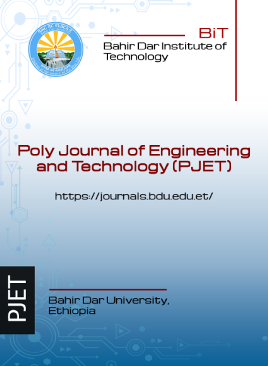Fabrication and characterization of hybrid sisal-Glass Reinforced HDPE composite for automobile side body panel application
Abstract
This study focuses on the Numerical simulation and experimental fabrication and mechanical characterization of a hybrid sisal-glass reinforced HDPE composite for automobile side body panel applications. The composite is manufactured using a compression molding technique with varying fiber-to-matrix weight ratios (Fiber 30% to Matrix 70% HDPE) S15G15H70, S5G25H70, S10G20H70, S20G10H70, S25G5H70), and stacking sequences [Sisal Glass-Glass] and [Glass-Sisal-Glass] to optimize mechanical performance. The mechanical properties, tensile, flexural, and impact strength, were test and evaluated in the laboratory, adhesive bonding mechanical performance in adhesively bonded single-side strap joint configuration (ABSSSJ) for steel-to-composite bonding. The measured tensile strengths ranged from 19.84 MPa (S15G15H70) to 31.92 MPa (S5G25H70), while flexural strengths ranged from 25.30 MPa to 38.10 MPa for the same compositions. Impact strength varied from 12.5 J/m to 18.2 J/m, showing improved energy absorption with higher glass fiber content. The study also examines the effect of adhesive parameters adhesive thickness, overlap length, overlap width and fracture toughness on debonding resistance. The study combines experimental testing and numerical simulations (Cohesive Zone Model-based FEM) to gain a deeper understanding of the bonding performance and failure mechanisms. Both experimental and simulation results indicated that increasing adhesive thickness and modulus improved shear strength, with the highest performance observed for specimens with 0.5 mm adhesive thickness and a 6 GPa adhesive modulus. The study provides a comprehensive understanding of the hybrid Sisal-Glass Reinforced HDPE composite's feasibility contributing to sustainable material development for lightweight automotive structural applications particularly for automobile side body panel.
Copyright (c) 2025 Poly Journal of Engineering and Technology (PJET)

This work is licensed under a Creative Commons Attribution-ShareAlike 4.0 International License.


